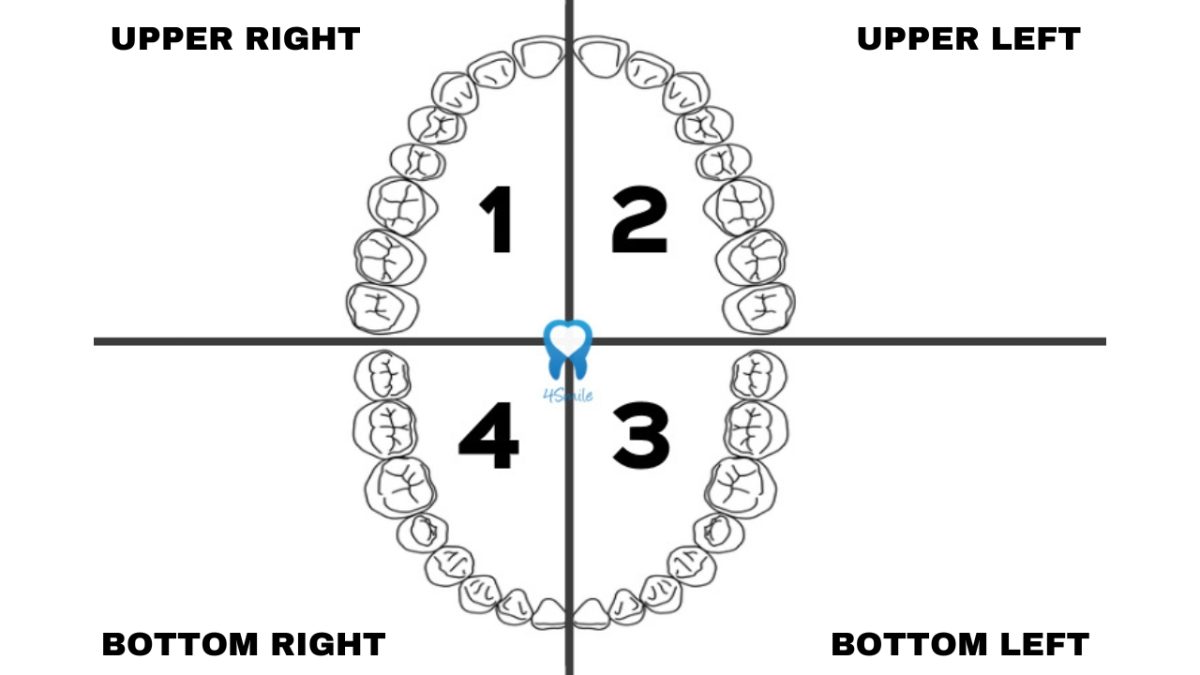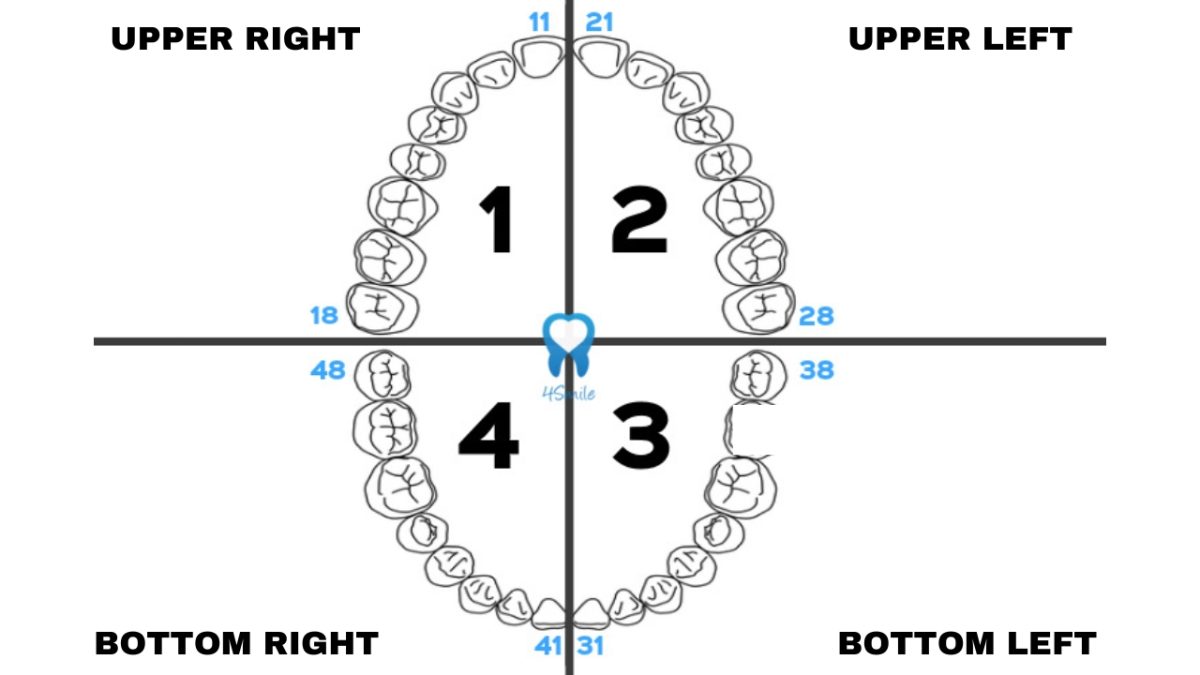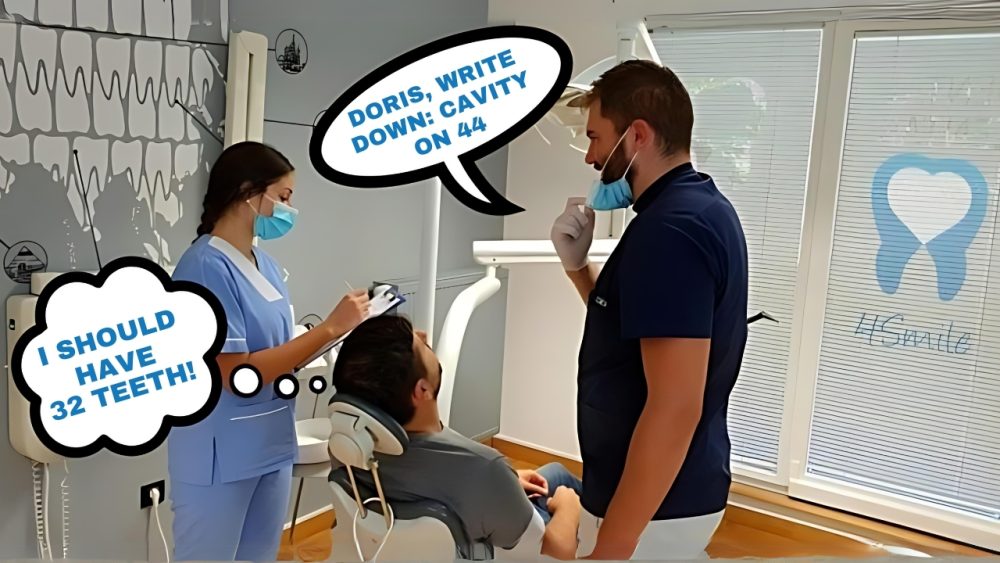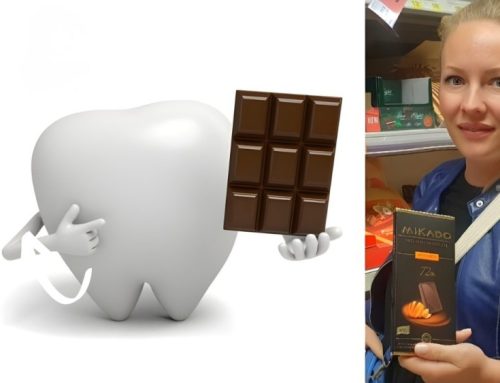How Does a Dentist Label Teeth? When you sit in the dentist’s chair, do you ever feel confused? You hear the dentist and staff talking, but you don’t understand exactly what they’re saying. Dental terminology is full of technical terms and numbers mostly used only by professionals. You want to understand what they’re saying about your teeth, right? In this week’s blog by Dental Center 4Smile, you’ll learn how a dentist labels teeth and which tooth corresponds to which number.
Most people know teeth by their names, such as molar, incisor, or wisdom tooth. In dental terminology, human teeth are identified by numbers.
In Zagreb, Europe, dentist Ivan Antolković marks everything that needs to be done and included in the treatment plan in a coordinate tooth system during the initial assessment of a patient’s status (initial condition in the mouth).
Let’s break down the coordinate tooth system into its components!
What Are Quadrants in Dentistry?
When you sit in the dentist’s chair, the last thing you expect to hear is the word “quadrant.” When dentists use this term, they’re not talking about equations or formulas. The term is used to denote parts of the mouth.
Dentists divide the inside of the mouth into four parts or quadrants. The upper parts of the jaw are the first two quadrants, while the lower parts are the third and fourth. So, the upper right part of the inside of your mouth is quadrant 1 (that’s your right side), and the upper left is quadrant 2.
While the upper part starts on the right side, the lower part is the opposite. The lower left is quadrant 3, and the lower right is quadrant 4. From the dentist’s perspective, looking at the open mouth in a clockwise direction, it’s easiest to list the quadrants so that quadrant 3 is below quadrant 2.

Numbering Teeth in Dentistry
An adult should have 32 teeth in their mouth, 16 upper and 16 lower. As we’ve learned so far, they are divided into quadrants: 8 teeth upper right, 8 teeth upper left, 8 teeth lower left, and 8 teeth lower right.
The counting of teeth starts from the middle in the frontal part towards the back teeth. So, most people know that the two front teeth in the upper and lower jaws are the “ones,” and they go up to the “eights” on each side.
The first thing to understand is that dentists use a two-digit numbering system. Thus, the upper right teeth start with the number “1” (i.e., 11), the upper left teeth start with the number “2” (i.e., 21), the lower left teeth start with the number “3” (i.e., 31), and the lower right teeth start with the number “4” (i.e., 41).
The two-digit system is used so that the first digit indicates which quadrant the tooth belongs to, and the second digit indicates the tooth’s position. For example, tooth 48 is a wisdom tooth on the lower right side. Number 4 is the lower right quadrant, and number 8 indicates it is the last tooth in the series, i.e., a wisdom tooth.

The upper jaw has lower numbers. These are teeth 11-18 and 21-28. Since the numbering system starts in the middle of the upper quadrant on the right side (quadrant number 1), the first two teeth are incisors. These are numbers 11 and 12. The next tooth is the canine, which is number 13. The premolar teeth are 14 and 15, molars are 16 and 17, and the wisdom tooth is number 18.
When dentist Ivan Antolković mentions numbers, it’s easiest to get confused with the incisors. This is because there are four incisors in the upper jaw and four in the lower jaw. They are also present in all four quadrants. In the upper jaw, in the right quadrant, the incisors are 11 and 12. In the left quadrant, the incisors are 21 and 22. Canines are teeth 13 and 23. Premolars are numbered as 14, 15, 24, 25, molars are from 16, 17, 26, 27, and wisdom teeth are 18 and 28.
The same applies to the lower jaw, where the teeth are 31-38 and 41-48. Counting starts in the lower left quadrant (quadrant number 3). Incisors are numbered 31, 32, 41, and 42. Canines are 33 and 43, premolars are 34, 35, 44, and 45. Then follow molars 36, 37, 46, and 47, and wisdom teeth 38 and 48.
Using this international coordinate tooth system, dentists can quickly determine which teeth are included in the treatment plan.
Next time you visit Dental Center 4Smile and dentist Ivan Antolković tells you that a composite filling (filling) is needed on 45, you’ll know it’s the fifth tooth on the lower right side :)















